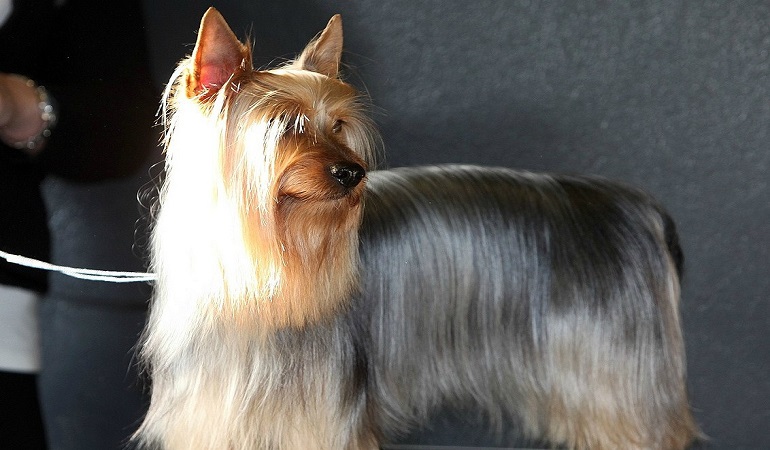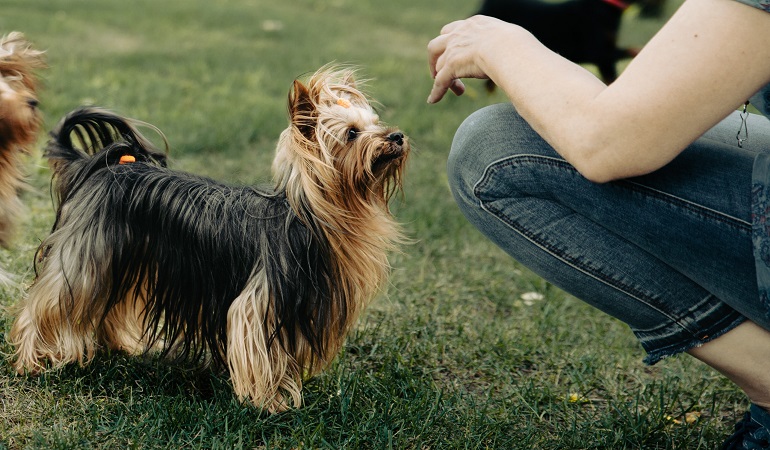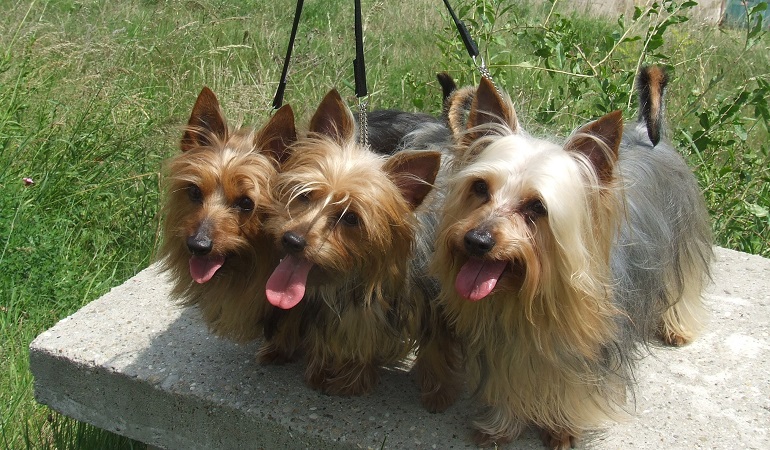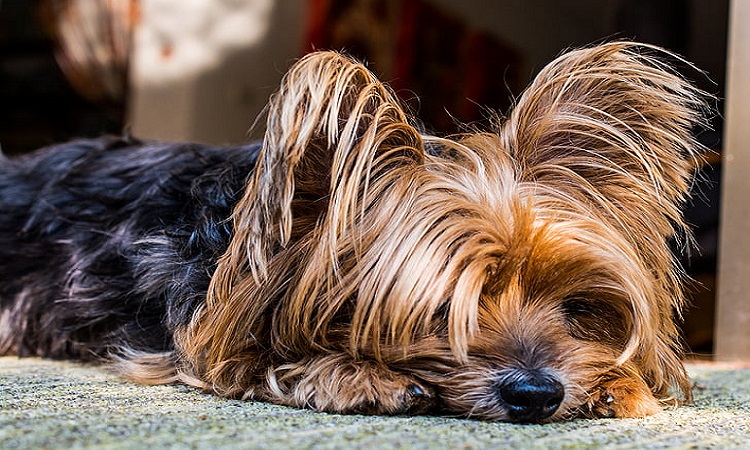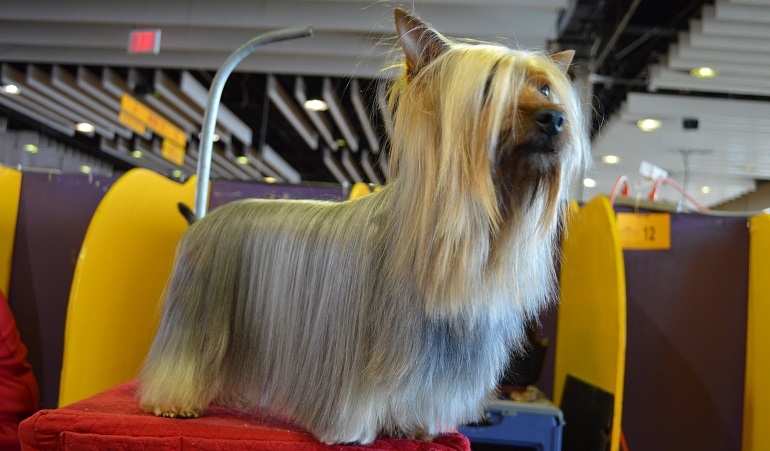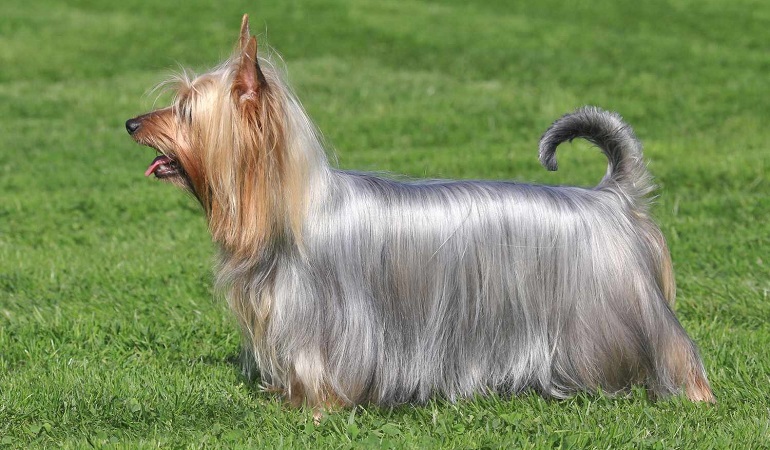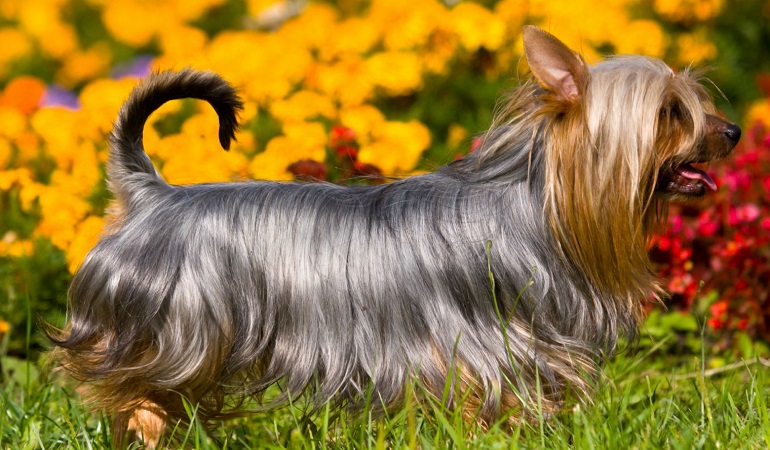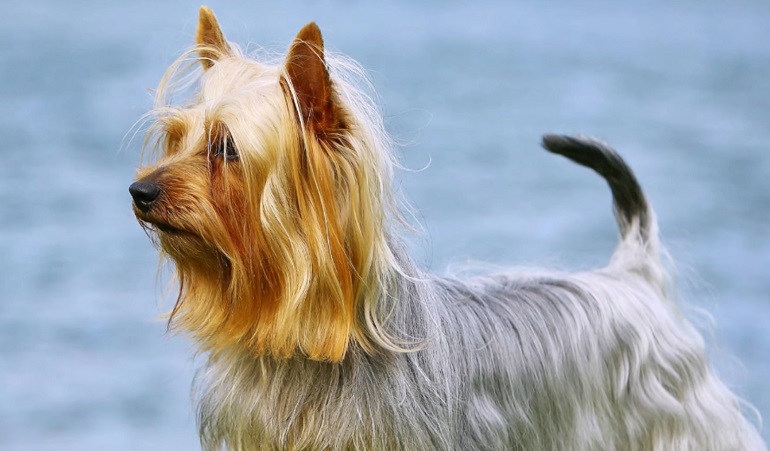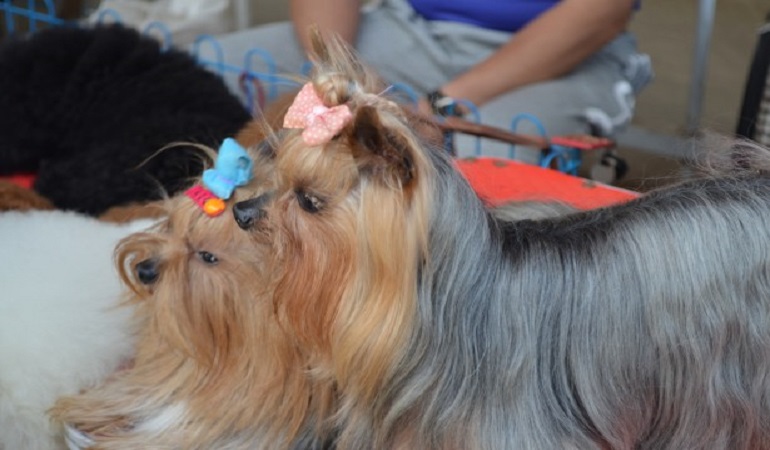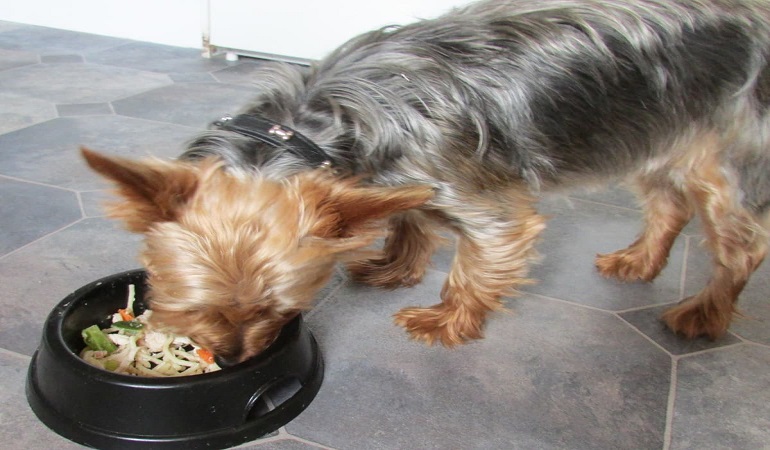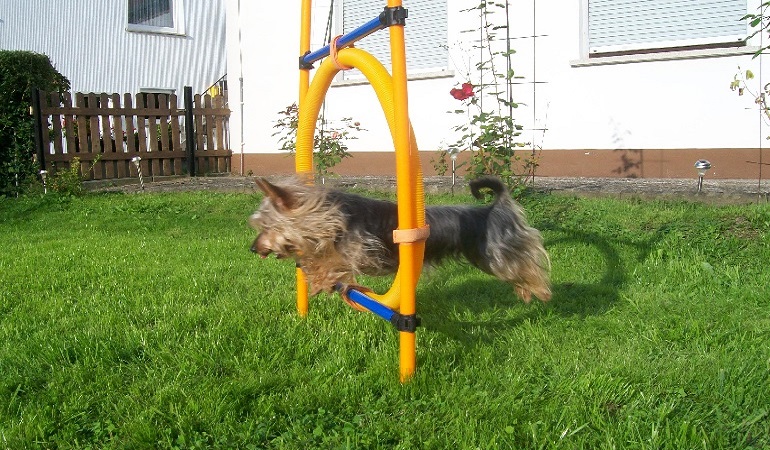Discover the captivating world of the Silky Terrier, a breed that packs big personality into a small, elegant package. Beyond their flowing, silky coat lies a spirited and intelligent companion. From their surprising terrier tenacity to their playful antics, this breed offers a unique blend of charm and energy. Delve into fascinating facts about their origins, grooming needs, temperament, and more. Whether you’re a seasoned dog owner or considering welcoming a Silky into your life, this guide unveils everything you need to know about these captivating canines.
Feisty, fun-loving, affectionate, and intelligent. This is the Australian Silky terrier.
With their almond-shaped eyes and teddy bear face, these small but high-energy dogs certainly pack a big personality.
Now, to be honest, I’ve always been drawn to larger bull terrier types of dogs, that is, until my daughter bought home Jack, a Yorkshire terrier, the cousin of the Silky terrier.
Needless to say, Jack and I quickly formed a bond, and along with it, I gained a whole new perspective and respect for the small terrier breed of dog.
In this article, we look at the Silky terrier, a native of Sydney, Australia, who, at just 10 inches tall, makes a charming addition to your home if you are looking for doggy companionship.
About the Breed
With their straight and glossy blue and rich tan coats, the Silky terrier, despite being small in stature, is still one of the most instinctual, hard-wired breeds of working dogs.
Originally bred to hunt rodents on farms in Australia, their compact size made them perfect for keeping pests away.
Nowadays, despite these dogs becoming urban pets and companion dogs, the instinct is still there to go ratting, which sees them excelling in scent competitions such as earthdog trails and agility work.
And not surprisingly, given their background, the Silky terrier, curious by nature, still craves adventure and engagement today.
In fact, these little dogs are highly vigilant and are more likely to alert you to any unusual activity, whether it’s the arrival of the FedEx delivery person or squirrels running around outside.
Silky Terrier Appearance
At first glance, you wouldn’t be mistaken for thinking that the Silky terrier is the same breed as a Yorkshire terrier or even an Australian terrier.
But there are some subtle differences. So, let’s look at how this small dog stacks up against its close cousins, the Australian terrier, and the Yorkshire terrier.
Height
When fully grown, these energetic little dogs are between nine to 10 inches in height.
Weight
Generally, the Silky terrier should weigh about 10 pounds, as carrying additional weight can cause severe health problems for these little dogs.
Features
The Silky terrier is hard to miss with its little wedge-shaped head, hair parted down the middle, upright V-shaped ears, and mischievous, inquisitive eyes.
Yet despite their small size underneath all that hair, they have an athletic build with a slighter longer than tall body proportion.
Coat
The Silky terrier’s coat and coat color have to be its most distinctive feature. Silky, straight, shiny, and very similar to human hair, the breed’s coat follows the shape of its body and is parted along the back.
Color
According to the American Kennel Club, there are six types of desirable breed colors. These colors are as follows: black and tan, blue and tan, blue and silver and tan, grey and tan, silver and tan, and silver black and tan.
Life Expectancy
Given the right care and attention, these sturdy little terriers can live up to 12 or 15 years of age.
History of the Silky Terrier
The Silky Terrier originated in Australia back in the 1890s when native Australian terriers were crossed with imported Yorkshire terriers for the hunting of rodents.
Understandably the initial offspring either looked like a Yorkshire terrier or an Australian Terrier, while some looked like the Silky terrier dog found today.
These Silky terrier-looking dogs were then interbred until the puppies produced had the desirable Silky terrier traits that breeders were looking for.
Initially, this new terrier breed was called the Sydney Silky Terrier due to the prominence of its breed in the city of Sydney in Australia.
But other breeders from Tasmania and Victoria also laid claim to being the originators of the Sydney Silky terrier, all with different written guidelines on the breed standard.
Eventually, all parties compromised, and a new breed standard came about in 1926 with the name Australian Silky Terrier officially adopted by the Australian Kennel Club in 1955.
And by 1958, some 500 of these Australian Silky Terriers had been imported into the US from Australia. This, in turn, prompted the American Kennel Club to admit the breed American Silky terrier as a toy breed known as the Silky Terrier in the US in 1959.
Silky Terrier Facts
With its compact little body and keen sense of adventure, the Silky terrier often surprises people with its big, bold spirit and larger-than-life personality.
And here are some more surprising Silky Terrier facts.
It Makes a Great Urban Dog
Although initially bred for ratting like his terrier cousins, the Silky terrier is well suited to city apartment living thanks partly to its small size and their desire to be inside following their pet parent around.
It Comes with a Complicated Naming History
For such a small dog, the Silky terrier breed has undoubtedly had its fair share of name changes. In fact, since it was bred in Australia all those years ago and originally called the Sydney Silky Terrier, it has undergone two name changes depending on where in the world you live.
In the rest of the world and Australia, for instance, it is still referred to as the Australian Silky Terrier. While in the US, The American Kennel Club and later the United Kennel Club recognized the Silky Terrier as one of the toy breeds, as did the Canadian Kennel Club.
It Makes a Tremendous Special Eventing Dog
Despite their small size, these larger-than-life dogs have earned recognition for their impressive abilities as participants in special events.
Silky terriers, due to their desire to stay occupied, high levels of energy, and strong prey drive, perform well in tracking and fly ball, herding, and agility and are successful as show dogs.
Silky Terrier Temperament and Personality
Despite their small stature and beneath their cute teddy bear looks, the silky terrier is one bold character.
Often referred to as having a Napoleon complex as a form of overcompensation for being small, the Silky terrier is not averse to taking on other dogs or warning off intruders.
In fact, thanks to their terrier temperament, they are often described as tenacious, scrappy, and mischievous, with a penchant for barking, digging, and chasing.
These little rascals make great watchdogs, although they are prone to excessive barking, so early training is essential to stop this in its tracks.
As such, Silky terriers thrive on human companionship and are playful and loving but shouldn’t be left to their own devices at home for extended periods of time as they tend to get up to mischief when left unsupervised.
With their high energy, these little dogs are always up for an adventure and will even keep up with you on a hike if needs be, but they do prefer to be indoors with their family members.
This breed, although fairly tolerant of strangers, may not tolerate young kids or toddlers poking and prodding at them, so caution is advised if the dog is around small children.
Silky Terrier Health and Care
The Silky terrier, just like all other breeds of dogs, while generally healthy, may suffer from certain health conditions.
Silky Terrier Health
First off, look for the dog’s health clearances from both of its parents, if available, to rule out any genetic diseases that your dog may have inherited.
A responsible breeder should have these clearances from the National Breed Club on record on hand to show you when required.
So, with that said, let’s have a look at the list of possible health concerns to be aware of with this small breed of terrier.
Patellar Luxation
Also referred to as slipped stifles, which is a common problem in small dogs, it, in short, means dislocation of the knee joint and often affects the hind legs of the dog when the knee joint slides out of place.
It can cause pain for the dog and be crippling. However, many dogs with this condition go on to lead relatively normal life.
Legg Perthes Disease
This disease affects the hip joint in Silky terriers and usually occurs when Silky pups are still young. With this disease, the blood supply to the large rear leg bone is diminished in the dog, and the pelvis begins to disintegrate.
Typical signs of the disease are the wasting away of the leg muscle and limping. However, surgery can be performed to correct the condition, and puppies go on to lead a normal life.
Elbow Dysplasia
Although medium to large dogs are usually vulnerable to this disease, Silky terriers can be prone to developing it due to poor nutrition, obesity, and a low level of exercise, amongst other factors.
Caused by abnormal development of the elbow in young dogs, early signs include lameness and a lop-sided gait.
And while elbow dysplasia cannot be cured, it can be managed with surgery and long-term medical management.
Tracheal Collapse
Caused by a weakening of the cartilage, the windpipe flattens and obstructs the airways in the dog. Symptoms include fainting, a honking cough, and an inability to exercise.
Veterinarian support includes steroids, antibiotics, and sometimes surgery to treat the condition.
Diabetes
Although any dog breed can be affected by this disease, Silky terriers seem more susceptible to it.
With this disease, the dog’s body can no longer regulate blood sugar levels. As a result, some of the symptoms include weight loss, increased appetite, excessive urination, and thirst.
Veterinarian support typically entails the dog sticking to a controlled diet and insulin shots if necessary.
Epilepsy
A chronic neurological brain disease, epilepsy is not always inherited in the Silky terrier dog. This condition can cause mild or severe seizures in a dog, with some of the symptoms being staggering, falling down, rigid limbs, or even loss of consciousness.
A veterinarian will have to evaluate the dog in order to rule out other causes, make a proper diagnosis and recommend the appropriate treatment.
Silky Terrier Care
As small as they are, a Silky terrier still requires grooming and, more importantly, exercise due to their heritage as a hunter of small prey.
Grooming
With their long sleek coats, you would think these little dogs would require more upkeep than other breeds. But in fact, Silkies are pretty easy to keep, grooming-wise.
A thorough brushing of their coat two to three times a week with a soft bristle brush or pin brush and a bath every month are all that is required.
And more surprisingly, despite their coat length, these small dogs produce little dander, which is great if you have allergy symptoms.
If you are acquiring your Silky as a puppy, start accustoming it to being brushed and examined from early on by looking inside its mouth and handling its paws frequently.
And talking about examinations, Silkys can be prone to skin and ear infections.
One such infection is caused by yeast (Malassezia dermatitis), which causes redness, itching, and a brown waxy discharge when it infects the ears.
While on the skin, it can cause greasy, hairless areas that emit an odor, especially on the neck and throat.
Also, a Silky terrier dog can suffer from hair loss from Color Dilution Alopecia, and while not painful or itchy, it can lead to secondary bacterial infections.
In addition, another common problem that Silky terriers are susceptible to is problems with their teeth.
It starts with tartar build-up, which then progresses to gum infection and teeth rotting. So brushing your Silky’s teeth two to three times a week is advisable.
Exercise Requirements
As a dog breed, Silky terriers absolutely thrive on exercise to release their pent-up energy.
Whether it’s a walk around the neighborhood or a hike in the countryside, these little dogs are up to the challenge and will happily join in as long as they are by your side for their dose of daily exercise.
But it is advisable to keep them on a leash when out walking as, due to their strong prey drive, they are apt to go haring off if something small and furry catches their eye.
And additionally, due to their low intolerance of other dogs, be extra vigilant at a dog park where a Silky is more prone to pick a fight with a dog twice its size.
Silky Terrier Food and Diet
Dogs, just like people, have different levels of appetite. And the Silky dog breed, as a small but energetic dog, requires a healthy and nutritionally balanced diet.
The recommended amount for Silky terrier adult dogs is about ¾ of a cup of dry dog food divided into two meals daily, while Silky puppies require about ¼ of a cup of dry puppy kibbles daily.
In fact, obesity can be a significant health problem for a Silky terrier and can cause back pain, digestive disorders, and heart disease. So be mindful of those extra treats.
Silky’s are known con artists when it comes to food, so don’t get taken in by the soulful eyes begging for more. Instead, base the amount of food you give on the dog’s physical condition and monitor its weight.
If you can’t see a waist when you look down at the dog, it’s time for less food and more exercise.
Silky Terrier Training
Just like every other dog breed, the Silky terrier dog requires early socialization to different sights, sounds, and people from a young age. In fact, these little dogs thrive on mental stimulation.
By doing this, you are ensuring that your Silky terrier puppy will grow into a well-adjusted dog who is comfortable in most situations.
From a small age, the easiest way to start housetraining your Silky pup is by using crate training.
Not only is a crate ideal to keep the small dog out of mischief and from being destructive while you are away from home, but it also helps the dog accept confinement if ever hospitalization or boarding is required.
But as Silkies are people-orientated dogs, they should never be confined to the crate for hours on end as this can lead to depression and anxiety. Instead, the dog kennel or crate should be seen as a safe space by your Silky as a place to take a nap when needed.
When it comes to obedience training, Silky terriers make willing students due to their intelligence. But it has to be made into a fun event that uses positive reinforcement; otherwise, your Silky will not cooperate as they are inclined to make up their own rules as they go along.
Family Compatibility
Fun and feisty, the Silky terrier can make good family dogs, but as with all other dog breeds, there are some traits you need to be aware of.
Children
Although generally friendly, the Silky terrier may not be the ideal family pet if you have younger children or toddlers, as they tend to be snippy when prodded or poked and not handled with delicate hands.
In fact, it is recommended that if you have young children and your heart is set on a Silky terrier, you adopt a puppy so it can become accustomed and exposed to kids from an early age.
Territorial
Silky can be very territorial and aggressive towards other dogs in the household if not appropriately socialized and raised to be dog friendly from a young age.
Additionally, a Silky terrier may not be ideal if you have cats, rabbits, or other small animals, as the breed’s tendency is to chase them.
Companionship
A silky terrier is very much a people person and ideally needs to be with people who can spend time with them, whether it’s accompanying you in the car or out for a walk.As such, this little dog is not suited to being left alone for long periods as it craves mental stimulation and companionship. And if left for long periods unattended out in the yard, the chances of the dog digging its way out or getting up to mischief is almost a given.
Conclusion
Full of personality, vocal, and cute to boot, the sturdy little Silky terrier is one of the rarer small breeds of dogs found in the US today.But sadly, all too often, they are purchased by well-meaning humans who have no real understanding of what goes into owning them as a pet.In fact, many Silky terriers are in need of adoption or fostering because of this, so before opting to buy one, contact the national breed club or dog breed rescue groups which will point you in the right direction to your nearest Silky rescue.
So if your heart is set on owning one of these mischievous, lovable characters who will be happy just to be by your side, remember to adopt and don’t shop!
Related Guide:
- Mini Labradoodle
- Mini Goldendoodle
- Blue Nose Pitbull
The Silky Terrier, a compact dynamo of personality, proves that big things come in small packages. From their elegant, flowing coat to their spirited terrier tenacity, Silkies are captivating companions. Though small in stature, they are bold watchdogs and playful family members, thriving on activity and interaction. Understanding their grooming needs and providing consistent training ensures a happy and well-adjusted Silky. Whether an experienced owner or considering your first, the Silky Terrier’s charm and intelligence make them a truly rewarding breed to share your life with.

